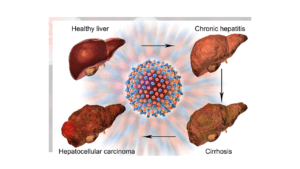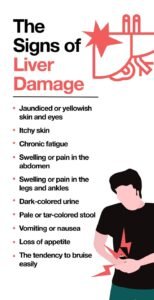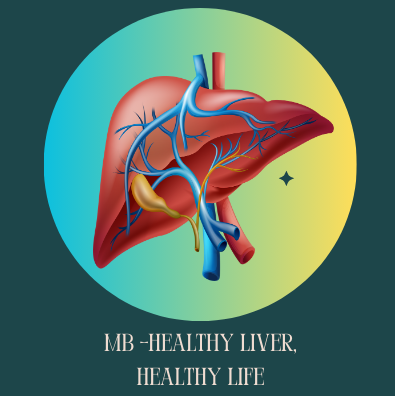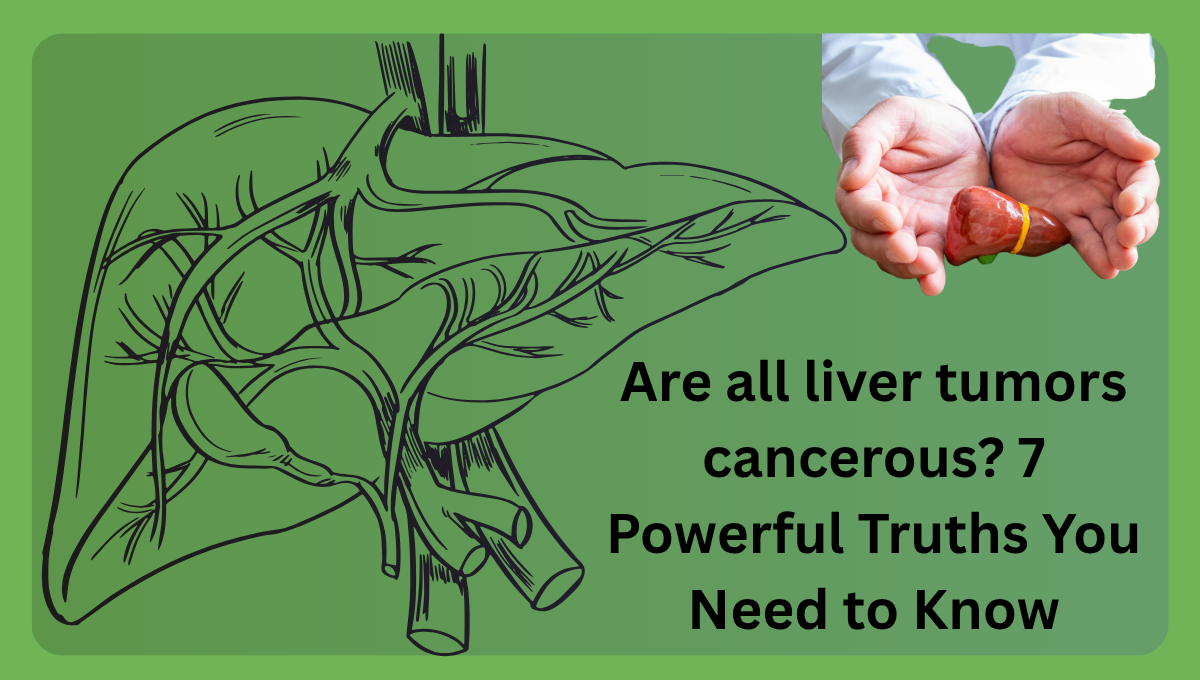Are all liver tumors cancerous? 7 Powerful Truths You Need to Know

Knowing About Liver Tumors
Abnormal growths in the liver are called liver tumors. They’re not all malignant. Actually, a large number of liver tumors are benign, which means they don’t spread to other body areas. However, because it affects the prognosis and treatment plan, it is crucial to differentiate between benign and malignant tumors.
Difference Between Benign and Malignant Tumours
Let’s clear up a common confusion—not all liver tumors are cancerous. Here’s a breakdown:
| Feature | Benign Tumours | Malignant Tumours |
|---|---|---|
| Growth Rate | Slow | Often fast |
| Spread (Metastasis) | No | Yes |
| Life-Threatening | Rarely | Yes |
| Treatment | Often observation | Requires medical intervention |
Benign liver tumors such as hemangiomas and hepatic adenomas may not even require treatment. Malignant tumors, like hepatocellular carcinoma (HCC) or cholangiocarcinoma, need aggressive care.

Typical Liver Tumor Types HCC, or hepatocellular carcinoma This is the most prevalent type of primary liver cancer and is frequently linked to cirrhosis, hepatitis B/C infections, or chronic liver disease. Due to the ambiguous symptoms, it is frequently detected late.
Cholangiocarcinoma
This malignant tumor, which affects the liver’s bile ducts, is also referred to as bile duct cancer. Despite being less common than HCC, it is just as aggressive and challenging to cure.
Hemangioma
The most prevalent benign liver tumor is this one. Made of blood vessels, it rarely exhibits symptoms and, unless it is really big, usually doesn’t require treatment.
Hepatic Adenoma
Most often observed in young women using hormonal contraception, these are benign epithelial tumors. Although unlikely, bleeding or cancer development is a possibility.
 Signs of Liver Cancer
Signs of Liver Cancer
In their early stages, many liver tumors, especially benign ones, show no symptoms. When symptoms do manifest, they could consist of:
Pain in the right upper abdomen
Unaccounted-for weight loss
Weariness
Jaundice (eye or skin yellowing)
Vomiting or feeling queasy
Abdominal swelling
It’s time to see a doctor right away if you encounter any of these.


Risk Factors for Liver Tumor Development
Early detection is facilitated by knowledge of risk factors. These are the principal ones:
Hepatitis B or C that is chronic
Overindulgence in alcohol
NAFLD, or non-alcoholic fatty liver disease
Diabetes and obesity
Liver illness in the family
Smoking
Particularly at risk are the elderly and those with a history of cirrhosis.
Diagnostic Instruments for the Identification of Liver Tumors
Numerous instruments are available in modern medicine to identify and evaluate liver tumors.
Liver Function Tests’ (LFTs’) function
Bilirubin levels and liver enzymes are measured by these blood tests. While abnormal LFTs cannot confirm malignancy, they can indicate liver damage.
Imaging Methods
These consist of:
A first-line, reasonably priced instrument is ultrasound.
 MRI and CT scans provide fine-grained liver imaging.
MRI and CT scans provide fine-grained liver imaging.
Liver stiffness is measured with FibroScan (elastography).
Procedures for Biopsies
It could be necessary to have a liver biopsy to determine whether the tumor is benign or cancerous. It entails using a needle to remove a little sample of liver tissue.
Are All Tumors of the Liver Cancerous? Dispelling the Myth
The fact is that only a small percentage of liver tumors are malignant.
Up to 75% of liver tumors in the general population are benign tumors.
Only a biopsy or more research can prove cancer in senior adults; therefore, it’s critical not to panic about imaging data alone.
The Stage of Liver Tumors
Stages I through IV are assigned to malignant liver tumors based on:
Size of tumor
spread to organs or lymph nodes
Status of liver function
Prognosis is determined by staging, which also aids in treatment planning.
Treatment Options for Benign Tumors Depending on the Type of Tumor
The majority of benign tumors don’t require care. Surgery, however, might be taken into consideration if the tumor:
produces symptoms
grows quickly
Risks of rupture or bleeding
Malignant Tumor Treatments
These may consist of:
Resection by surgery (if detected early)
Transplanting a liver
Ablation via radiofrequency (RFA)
Immunotherapy or targeted therapy
Chemotherapy
Treatment regimens differ according to the patient’s health situation, type, and stage.
Having been diagnosed with a liver tumor
Receiving a liver tumor diagnosis is devastating. Here’s how to handle it:
Keep up a nutritious diet
Steer clear of alcohol and poisons.
Remain active and manage your stress.
Perform liver scans as recommended.
Participate in support groups
The quality of life can be significantly enhanced by early diagnosis and monitoring.
Ways to Avoid Liver Cancer
Obtain a hepatitis B vaccination.
Maintain good hygiene to avoid contracting hepatitis C.
Limit your alcohol consumption.
If you are overweight, lose weight.
Refrain from using anabolic steroids needlessly.
In order to maintain liver health, prevention is essential.
When to Consult a Professional
See an oncologist or hepatologist if you suffer from:
Chronic pain in the right abdomen
whitening of the skin or eyes
An established history of liver illness accompanied by recent signs
Fatigue or weight loss that cannot be explained
Questions and Answers (FAQs)
1. Are all tumors of the liver malignant?
No. Hemangiomas and hepatic adenomas are two examples of the many benign, non-cancerous liver tumors.
2. How can liver tumors get identified?
by blood tests, imaging (ultrasound, MRI, CT), and occasionally biopsies.
3. Can benign liver tumors develop into malignant ones?
Although uncommon, certain conditions, such as hepatic adenomas, may eventually present a slight risk of cancer.
4. Which type of liver cancer is most prevalent?
Among primary liver cancers, hepatocellular carcinoma (HCC) is the most prevalent kind.
5. Do signs of liver tumors appear early?
Usually not. Usually, when the tumor is large or progressed, symptoms start to show.
6. What is the treatment for liver tumors?
The type of tumor determines the course of treatment; malignant tumors require surgery, medicine, or other therapies, but benign tumors may not need any.
In conclusion
Even though the word “liver tumor” may sound frightening, it’s important to realize that not all liver tumors are malignant. Many liver disorders can be successfully treated or healed with the right diagnosis, close observation, and medical intervention—especially if detected early. Maintaining ideal liver health is mostly dependent on awareness, regular screening, and healthy lifestyle modifications
 https://analytics.google.com/analytics/web/#/analysis/p405220706
Skip to content
https://analytics.google.com/analytics/web/#/analysis/p405220706
Skip to content 
